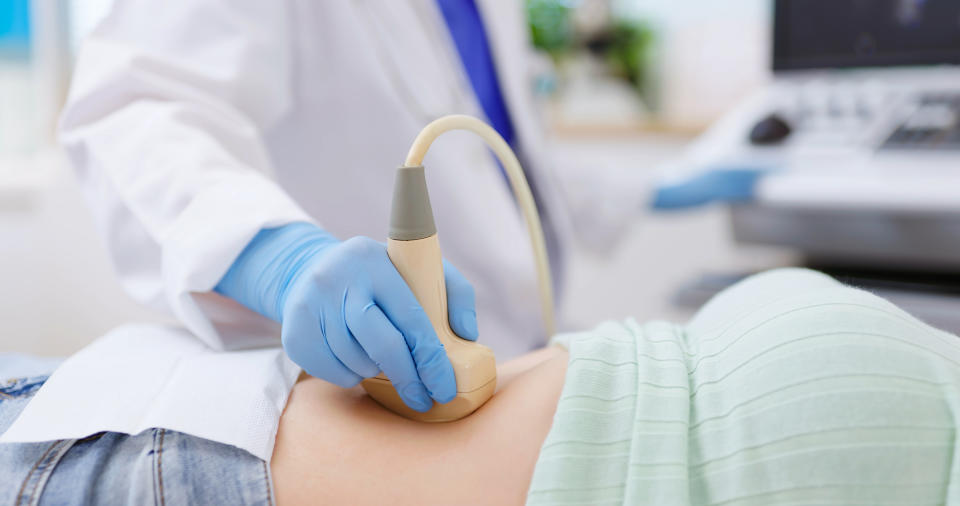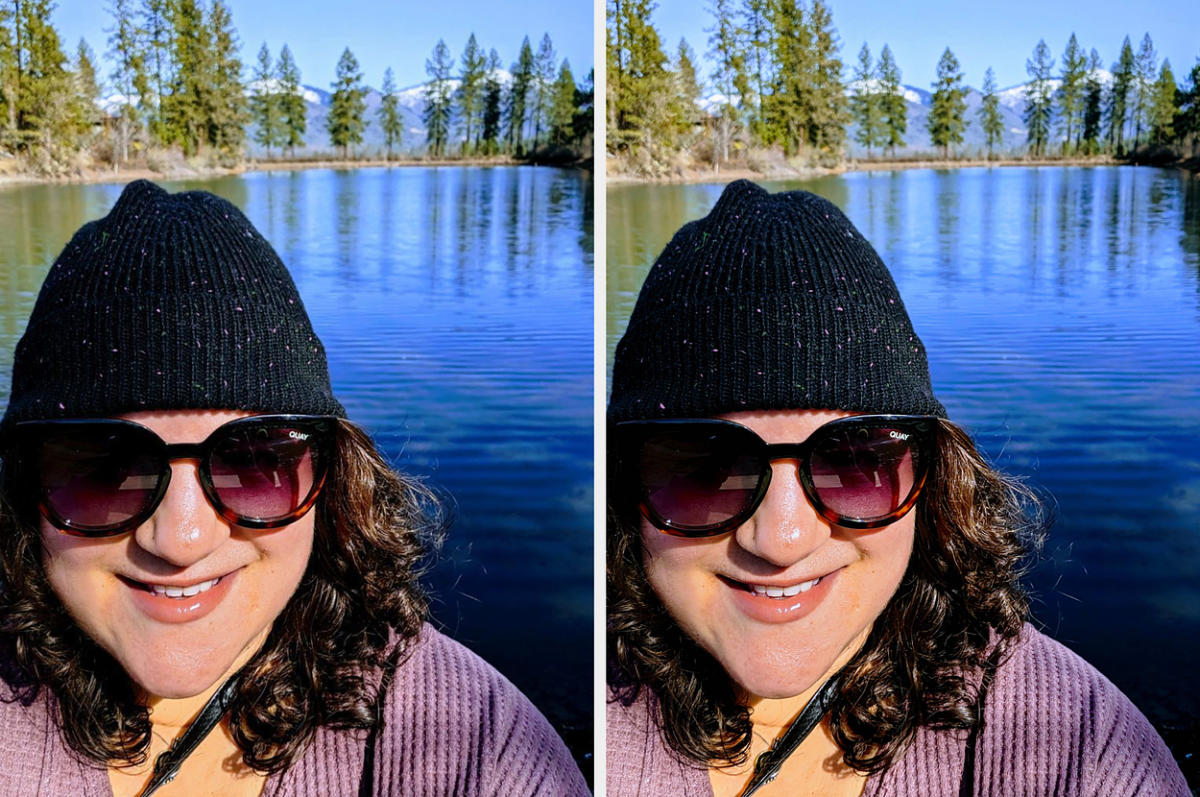On Sunday, Jan. 20, 2019, I collapsed in the shower. I only remember bits and pieces of what happened next. I heard my partner’s voice telling me to open my eyes as he cleaned my vomit off me, but I was shivering and fighting to stay awake. I told him to leave the water running over my face and I’d be able to get up in a moment. Then I blacked out again.
I vaguely remember hearing him call an ambulance. “My girlfriend has been bleeding since Thursday, and she’s collapsed in the shower. I can’t keep her conscious. Send someone now.”
With my hair knotted and soaking, three paramedics had to brace me as I walked no more than 10 feet from the bathroom to the gurney in our bedroom. A short ambulance ride later, I was in the emergency room. It took four nurses to finally find a vein strong enough to get an IV in.
A blood test showed my hemoglobin at 5 grams per deciliter (g/dl). Women in their 30s should have a hemoglobin level of 12 to 13 g/dl. Less than 9, you need medical attention. Less than 8, you need a blood transfusion. They started the transfusion almost immediately. It took three days and five bags of blood to get my levels to a safe number: 9.8 when I left the hospital.
Meanwhile, a transvaginal ultrasound uncovered two sizable fibroids on my uterus. They were inflamed and bleeding. I almost bled to death and thought it was my period.
During my weeklong stay at the hospital, there were a lot of questions. Have you always had heavy menstrual cycles? Yes. When did you start having these large blood clots and regular breakthrough bleeding? About five years ago. Did you tell your OB-GYN? Yes.
Finally it was my turn to ask a question. How do I fix this?
Multiple options were explained to me. The fibroids could be treated hormonally and with steroids to stop them from growing any more and hopefully keep the bleeding in check. I was told about various surgeries in which they could ablate or even remove the fibroids. However, there was a 50/50 chance they would grow back.
I asked if I could have a hysterectomy, but I was told that because I was so young, a hysterectomy should only be considered as a last resort. It was presented to me as a drastic approach that was really only considered for premenopausal women who have cancer.
So the “treatment” started. Hormones and steroids. Pills on pills on pills. By the time we hit the start of 2022, three years later, I was so sick from both the fibroids and the treatments that most days it was all I could do to simply get out of bed. I had searing pelvic and abdominal pain, fainting spells and blackouts, bone and joint pain, crippling fatigue, blinding migraines, tachycardia (a fast heartbeat) and constant hemorrhagic bleeding… sometimes for months at a time.
I stopped traveling unless it was absolutely necessary. I spent most of my time at home and had to meticulously plan social activities around my period, which had started lasting anywhere from two to three weeks. I was afraid to be home alone. What if I had more hemorrhagic bleeding and no one was there to help me in time? The ER became a second home. By my 34th birthday that September, I felt like I might not live long enough to see my 40th birthday.
So in October of 2022, I went to see a new OB-GYN, the third one in five years. After telling them all of this, I asked if they would refer me for a hysterectomy. I told the doctor I was very sure that I wanted the surgery, that I’d been thinking about it for years.
Like I had with other doctors before, I was met with immediate pushback. I was told they wouldn’t consider me as a surgery candidate without walking me through my other “options” first. Options I’d already been briefed on. Options I’d already tried that didn’t work. I was on the verge of tears as they sent me home with a bunch of literature on “treatments” I already knew about.

A follow-up appointment was set for a month later. I decided to see a different doctor. Immediately, I told them I wanted a hysterectomy, that I knew all the other options, had already tried all the medications, and if I was going under the knife, it would be for a sure thing, not for a 50/50 chance.
I told the doctor if they wouldn’t give me a hysterectomy, then I needed a referral to someone who would. I swore I’d bang down the door of every OB-GYN in the city if I had to until someone said yes. I don’t know what spurred me on to fight for myself that day. Maybe it was the fear of dying. Maybe it was the realization that because of my condition, I’d already stopped living.
Thankfully, I didn’t have to see any more doctors. They finally referred me to a surgeon the same day. I cried tears of joy driving home from that appointment.
In January 2023, four years after almost dying, I met with my surgeon for the first time. The following June, I had a uterine hysterectomy — my cervix, uterus and fallopian tubes were all removed. My ovaries, miraculously, are healthy, so those got to stay.
When I woke up from surgery, the difference was obvious. Instead of searing pain in my hips and pelvis, the only pain I felt was in my incisions, and that barely lasted more than a week. The first time I was able to stand up straight, it dawned on me that this was the first time I’d been able to fully extend my spine in almost five years. I kept waiting for the pain to return to my pelvis, for the crippling fatigue to grip me again, for the bleeding to restart. It never did, and I can’t begin to describe how freeing that is.
If you’re a doctor reading this, especially one in the gynecological field, I beg you not to dismiss your patients. My story is one of so many, and still we don’t talk enough about the struggle that women and people with female reproductive organs go through when seeking medical care. We’re told it’s all in our heads. Discouraged from fighting for the care we need. Talked down to. Our pain minimized.
I share my story hoping others can read it and know that they shouldn’t have to accept substandard care. They can demand that their doctors save their lives instead of believing this is just how they have to live.
In the time since surgery, my focus has been on healing. The physical healing happened fast. In the days and weeks right after surgery, it all went away — the migraines, the blackouts, the heart issues, the fatigue, the bone and joint pain. All gone. But I’m not only healing my physical body. I’m healing my mind, too, and that’s a longer journey.
A change happens in your brain when you almost die. It changes even more when you have to live with chronic pain and the constant threat of death. I’ve gone through a range of emotions since my surgery. Relief that it’s finally over. Excitement at being able to live again. And anger over the suffering, the gaslighting, having to beg and bang down doors for lifesaving care. Some days I even feel resentful toward myself for not fighting harder sooner. These days I try to be gentle with myself. I focus on living in the positivity that it’s all behind me now.
This article originally appeared on HuffPost.
